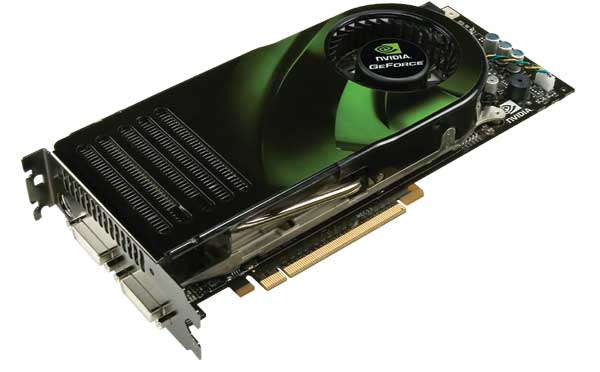 Today's the day that DX9 cards are put out to pasture. NVIDIA has unleashed the first DirectX 10 cards in the GeForce 8800 GTX and GeForce 8800 GTS. These two behemoths of a card represent the first in a line of a new architecture for NVIDIA in the G80. While we have a prototype of Leadtek's implementation of the GeForce 8800 GTS on hand, we'll start off with a brief overview of what's new with the G80. Let's see what 350+ people spending $475 million dollars for four years can come up with.
Today's the day that DX9 cards are put out to pasture. NVIDIA has unleashed the first DirectX 10 cards in the GeForce 8800 GTX and GeForce 8800 GTS. These two behemoths of a card represent the first in a line of a new architecture for NVIDIA in the G80. While we have a prototype of Leadtek's implementation of the GeForce 8800 GTS on hand, we'll start off with a brief overview of what's new with the G80. Let's see what 350+ people spending $475 million dollars for four years can come up with.With the announcement of the two cards, the NVIDIA line from top to bottom now stands at:
- GeForce 8800 GTX - $599
- GeForce 8800 GTS - $449
- GeForce 7950 GT - $299
- GeForce 7900 GS - $199
- GeForce 7600 GT - $159
- GeForce 7600 GS - $129
- GeForce 7300 - <$99
Unification seems to be the way to go with video cards as NVIDIA has a unified shader design for the G80 rather than the old separation of pixel and vertex shaders. The new unified processors are now called stream processors. The GTX card features 128 individual stream processors running at 1.35GHz while the GTS knocks off one grouping with 96 individual processors running at a slower 1.2GHz.
So NVIDIA has done away with individual pixel and vertex shaders with this design. Previously, some parts of the card would be sitting idle if a scene is more intensive in terms of one or the other. Now since the stream processors can do anything really, the whole card can be used and nothing would sit idle as each processor would be doing something to help render the scene. It all comes down to the card being more efficient and being used to its full potential.
What helps make the GTX card so expensive is that the card holds 768MB of GDDR3 memory. The GTS has a little less at 640MB. There's no word on lower memory cards yet but you can bet they will be out in the near future to bring some of these features down to the mainstream price range. I asked NVIDIA why they didn't go with GDDR4 and they replied that a combination of availability and cost drove them to use GDDR3 for now.
No comments:
Post a Comment